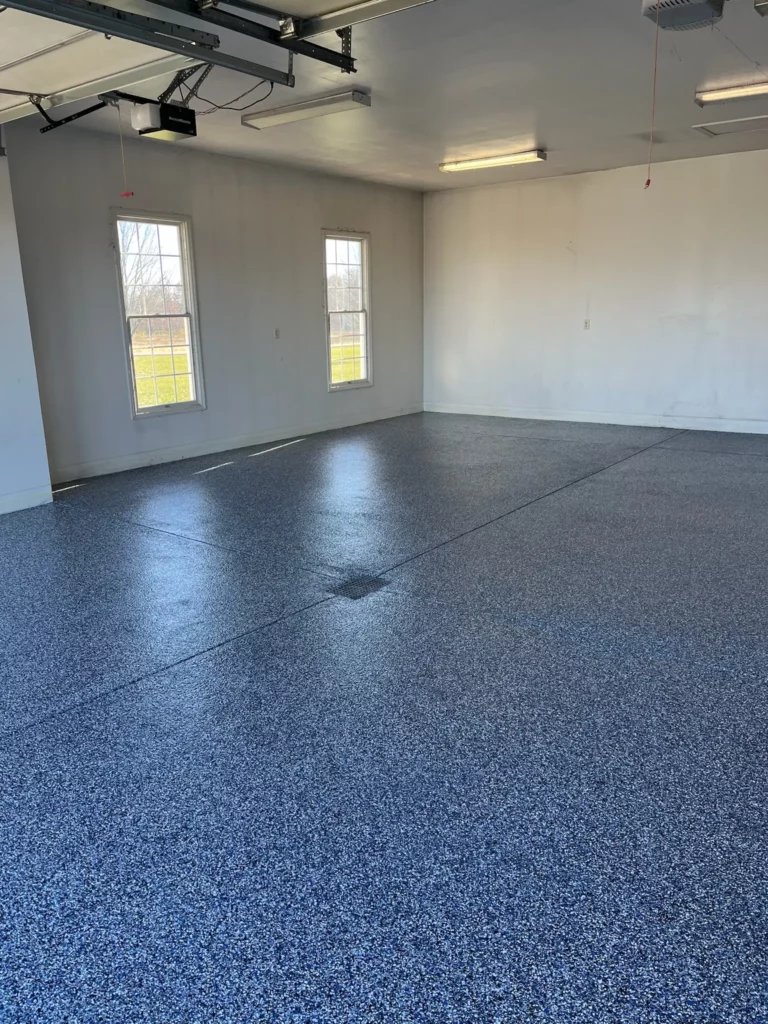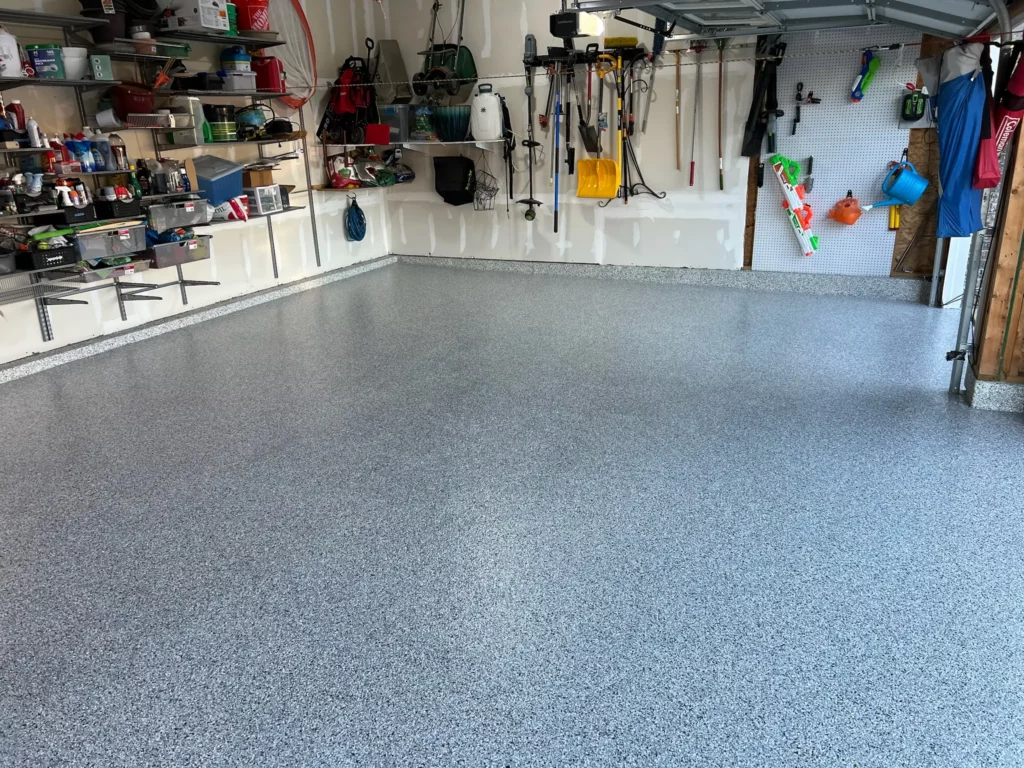If you’re considering a tough, low-maintenance upgrade for your garage, basement, or commercial space, you’ve probably asked the question: how long does epoxy flooring last in Chesterfield? Whether you’re sealing off a workspace or creating a sleek showroom floor, durability matters—especially when you’re investing time and money into the install. The good news? With proper prep and care, epoxy floors can stick around longer than that forgotten treadmill in the corner.
And when you choose a trusted installer like STL Coatings, you’re setting the foundation for long-term performance.
The Typical Lifespan of Epoxy Flooring
On average, professionally installed epoxy flooring lasts anywhere from 10 to 20 years. That timeline depends heavily on where it’s installed and how it’s used. A garage that sees weekly traffic from cars and the occasional oil spill? It might fall on the shorter end of that spectrum. A retail space that gets swept and mopped nightly? Closer to the 20-year mark.

Factors That Affect Epoxy Floor Longevity
So what actually determines how long epoxy flooring lasts? Several key variables come into play:
1. Surface Preparation
Most epoxy failures aren’t about the product—they’re about the prep. The concrete surface must be properly cleaned, degreased, repaired, and often mechanically ground to allow the epoxy to bond. Cutting corners here means peeling, bubbling, and short-lived results.
2. Quality of Materials
There’s a world of difference between a $79 DIY kit from the hardware store and a professionally installed 100% solids epoxy system. Professional-grade coatings resist UV damage, abrasions, and chemical spills better—and longer.
3. Thickness of Coating
Thicker coatings naturally last longer. High-traffic commercial settings might use multiple layers or incorporate quartz aggregate for extra strength. In contrast, a single-layer decorative flake coating may wear down faster under constant pressure.
4. Location and Traffic
Foot traffic? Forklifts? Hot tires from the driveway? The more action your epoxy sees, the more it’s tested. That’s not to say it won’t hold up—it’s just a matter of managing expectations and possibly opting for a more robust system.
5. Maintenance
Epoxy doesn’t require much upkeep, but neglecting it completely will shorten its lifespan. Regular sweeping, gentle mopping, and avoiding abrasive cleaners go a long way.
What Happens as Epoxy Floors Age?
Over time, even the toughest epoxy starts to show signs of use:
- Light scratches or scuffing in high-traffic areas
- Loss of gloss or slight dulling
- Fading from prolonged UV exposure (especially near windows)
- Small chips or cracks from dropped tools or equipment
The good news? Most of these issues are cosmetic and can be resolved with a recoat or light sanding plus a new top layer.
Can You Extend the Life of Your Epoxy Floor?
Absolutely. Here’s how to get every year possible from your epoxy system:
- Add floor mats or rubber pads under heavy equipment
- Install UV-resistant topcoats in sunny areas
- Avoid dragging sharp objects across the surface
- Clean spills promptly to prevent staining or chemical damage
Some clients also schedule a clear topcoat refresh every 5–7 years to keep the surface looking like new.

Where Epoxy Flooring Lasts the Longest in Chesterfield
- Garages: 10–15 years depending on tire heat and fluid spills
- Retail stores or showrooms: 15–20 years with proper cleaning
- Basements or storage areas: 20+ years with light use
- Industrial zones: 7–12 years, but highly dependent on foot and machinery traffic
Looking for longevity plus a little fun? Take inspiration from Game Show Battle Rooms in Chesterfield—a place where competition meets design. It’s a great reminder that performance doesn’t mean you have to sacrifice personality. Epoxy flooring can do both: hold up under pressure and still look like a winner.
Signs It’s Time to Replace or Recoat Your Epoxy Floor
Not sure if your floor is nearing the end of its run? Here are a few red flags:
- Widespread peeling or delamination
- Large chips or cracks
- Stubborn stains that won’t clean up
- Uneven texture or worn spots
In many cases, you won’t need a full replacement—just a light sanding and a new clear coat to extend its life.
Recoating vs. Full Replacement
If the base layer is still solid, recoating is cost-effective and far less disruptive. It typically involves:
- Surface cleaning and sanding
- Filling any cracks
- Applying a new layer of epoxy and/or clear topcoat
If there’s widespread peeling or damage to the concrete underneath, a full replacement might be necessary, especially in older garages or industrial buildings.
What Does Installation Quality Have to Do with Lifespan?
Everything.
Professional installers like STL Coatings follow strict procedures to ensure your floor not only looks great on day one—but keeps performing for years. That means:
- Concrete moisture testing
- Diamond grinding for superior adhesion
- High-build materials that don’t fade, flake, or bubble
- Clean, even application with zero shortcuts
It’s one of those cases where you really do get what you pay for.
Cost Over Time
While epoxy isn’t the cheapest flooring upfront, it makes up for it in lifespan. Average costs range from $4 to $10 per square foot, but divide that over 15 years and you’re looking at serious value.
Plus, compare that to other flooring types:
- Tile: Expensive repairs and grout issues
- Vinyl: Wears out and lifts in moisture-prone areas
- Paint: Cheap but flakes fast and needs regular redoing
Epoxy remains a standout choice for performance per dollar.
Final Thoughts
So how long does epoxy flooring last in Chesterfield? With the right materials, installation, and care, you could be walking (or driving) on it for 20 years or more. That’s why so many Chesterfield homeowners and businesses are making the switch.
If you’re ready to invest in a floor that lasts—and looks good doing it—STL Coatings can help make it happen.
Because when it comes to long-term durability, clean style, and midwestern weather resistance, epoxy flooring has staying power you can count on.
